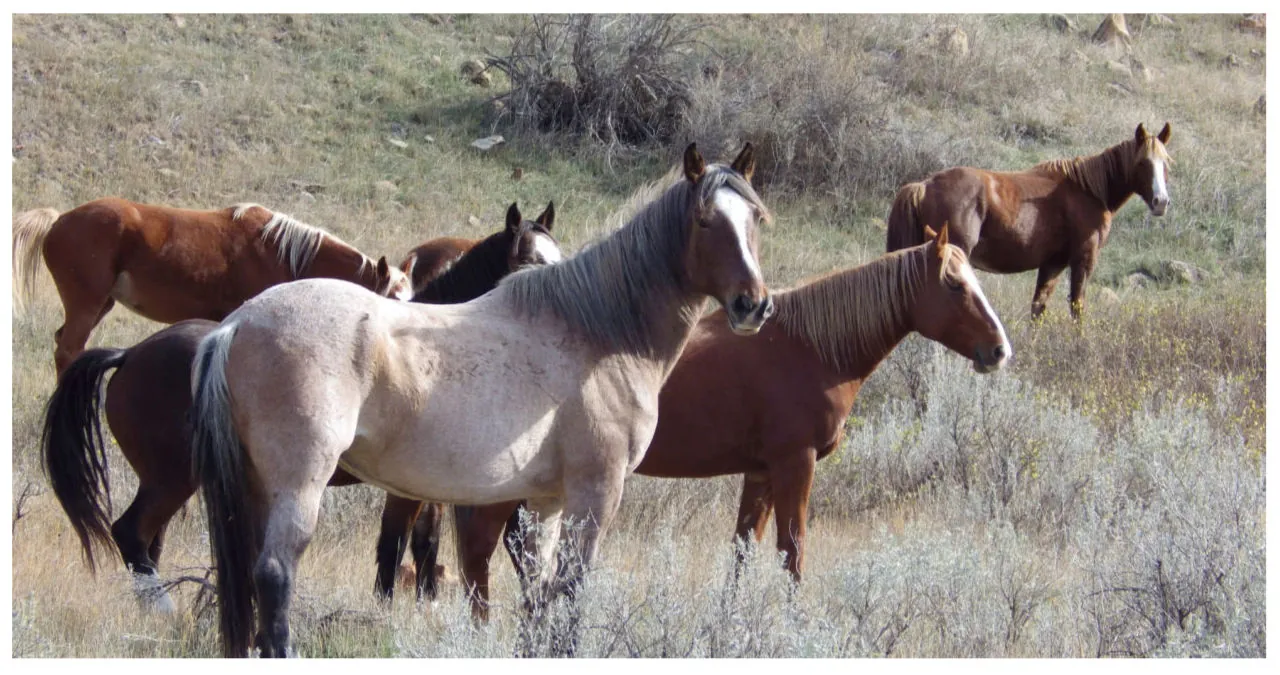Advocates for approximately 200 wild horses that roam North Dakota’s Theodore Roosevelt National Park are optimistic that a show of support from Congress will halt the removal of these cherished animals from their rugged habitat.
The National Park Service is expected to make a decision regarding the future of the horses in the Badlands National Park around April. This decision is part of an ongoing process to develop a park management plan for what the park refers to as “livestock,” a term that horse advocates strongly disagree with.
Republican Senator John Hoeven has included a provision in the annual Interior and Environment budget bill, which was recently passed by Congress and signed by President Joe Biden. This provision urges the Park Service to maintain the presence of the horses in their current location. Furthermore, it suggests the possibility of withholding funds that are designated for the removal of these horses in the future.
In an interview with The Associated Press, Hoeven expressed his optimism about continuing the dialogue with them and finding a favorable solution.
Advocates are concerned about the long-term preservation of the herd and are questioning the optimal number of horses needed for genetic viability. They believe that a herd of at least 150 horses is necessary to prevent inbreeding problems. However, Park Superintendent Angie Richman has indicated that even if the horses are allowed to remain, their numbers would still have to be reduced to 35 to 60 animals as outlined in a 1978 environmental assessment.
Richman and the National Park Service did not respond to our emails seeking comment on Hoeven’s legislation.
Park officials have previously stated that their assessment of whether the horses should remain in the park aligns with their policies of removing non-native species that could potentially harm the park’s resources. The park has suggested three possible courses of action: removing the horses promptly, removing them gradually, or taking no action at all.
Advocates have expressed concerns about the premeditated removal of the horses, whose ancestors were unintentionally enclosed in the park during the 1950s and have since been subjected to multiple roundups.
According to Castle McLaughlin, a researcher who studied the horses while employed by the Park Service in North Dakota in the 1980s, the horses in Theodore Roosevelt National Park have diverse origins. These origins range from Native American tribes and local ranches to domestic stallions that were introduced to the park from the late 1970s to the 1990s.
According to McLaughlin, the horses in North Dakota are a representation of the state’s history, both Native and non-Native, spanning over 150 years. She applauds the state leaders for their dedication to preserving these horses. However, McLaughlin remains cautiously optimistic and skeptical about the Park Service’s ability to make the right decisions in this matter.
Visitors and photographers are often thrilled by the sight of horses along the park’s scenic road and hiking trails.
The decision-making process regarding the horses has received overwhelming support from the public, with a vast majority expressing their preference to keep the horses.
Chris Kman, the President of Chasing Horses Wild Horse Advocates, expressed optimism about the potential outcome of the legislation, hoping that it would lead to the horses remaining in the park. However, she is eagerly awaiting the park’s decision and questioning how this legislation will impact the management plan for these horses.
“I doubt that any of us will have faith, even with the intervention of Congress, that the park will act responsibly and permit a genetically sustainable population of horses to remain,” she expressed. “Throughout this entire process, their stance has consistently been that they cannot accommodate the horses. Despite understanding the public’s desire to preserve them, they have chosen not to heed the overwhelming outcry.”
Governor Doug Burgum extended an offer last year to collaborate with the state in order to ensure the well-being of the horses in the park. Richman expressed park officials’ willingness to cooperate with the governor and the state in order to achieve a favorable outcome.
A group of horses can be found in the South Unit of the park, located near Medora. The decision made by park officials will also impact approximately nine longhorn cattle residing in the North Unit of the park.

